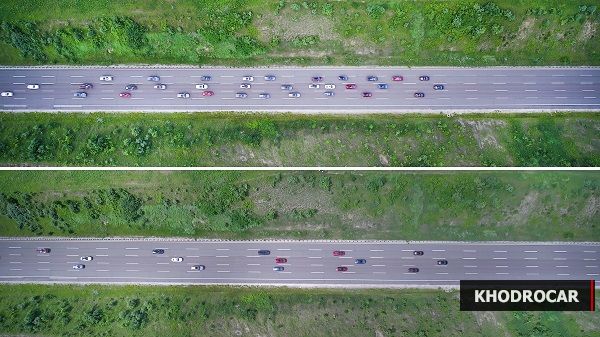Ford and Vanderbilt are looking at what causes phantom jams, and we figure out why lane expansion isn't really successful.
Studying traffic is really just studying people. After all, it's our vehicles, habits and natural responses to stimuli (or lack thereof) that cause traffic in the first place. One traffic phenomenon that continues to vex us as drivers is something known as a "phantom traffic jam" and unlike a jam that's a result of something physically obstructing the roadway, this is a jam that starts in our minds before it ruins our day.

Vanderbilt University and Ford are working on finding a solution to these phantom traffic jams, and surprisingly, their fix involves using something that's already fairly common on modern vehicles: adaptive cruise control.
You see, a phantom jam (excellent band name, right?) starts when one or more drivers at the head of a pack of cars applies the brakes. Seeing the brake lights, the people behind them naturally slow down, and while it might be a relatively simple thing to speed back up, there is already a ripple effect being sent down the road from brake light to eyeball, and the time it takes to brake, reaccelerate and then re-establish a safe following distance continues to grow.
How does adaptive cruise control solve this ripple problem? Easy: It takes human reaction time out of the equation. Instead of waiting for a driver to see brake lights, slow, determine it's safe to speed up, actually speed up and re-establish following distance, the adaptive cruise control system uses radar to immediately detect that a vehicle it's following is slowing and brakes proportionately to maintain a safe following distance. The car behind this car does the same, and because it's all happening automatically and human reaction times aren't a factor, we don't get the same increasing ripple factor.
But traffic science is about way more than just phantom jams. It's also about understanding ways to alleviate traffic before it happens. You'd think the solution to more traffic would be more lanes on the highway. More roads mean that the density of traffic goes down, right? Apparently not, thanks to a phenomenon called latent demand. Latent demand is the idea that if you widen a highway to reduce its traffic density, people who would otherwise have stayed on surface streets will now fill the newly available space on the highway, negating the benefit of having more lanes.
One solution to highway traffic in particular that actually seems to work is ramp metering. These are those traffic lights in the middle of a freeway onramp that allow only one or two cars to go at a time. This reduces the influx of new vehicles onto the highway, thus preventing big clumps at onramps and cutting down on traffic.
Source: CNET
Latest News


